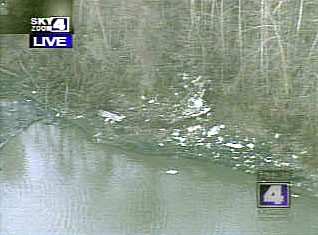NYT Warning On Charters: Do We Have A Problem Here?
By ANN Senior Editor Pete Combs
 In my other life -- the one I live
before running into the phone booth, donning my red cape and
editing Aero-News every day -- I'm a local radio news guy. As such,
I interact freely with the host of our morning talk show (WINK/WNOG
in Fort Myers and Naples, FL). Many times, I find myself defending
my profession against a barrage of criticism about media bias. A
lot of times, my comments amount to, "Don't shoot the
messenger."
In my other life -- the one I live
before running into the phone booth, donning my red cape and
editing Aero-News every day -- I'm a local radio news guy. As such,
I interact freely with the host of our morning talk show (WINK/WNOG
in Fort Myers and Naples, FL). Many times, I find myself defending
my profession against a barrage of criticism about media bias. A
lot of times, my comments amount to, "Don't shoot the
messenger."
Case in point: a story published in the New York Times on
Tuesday.
In an article entitled, "When Chartering An Airplane, Consider
The Numbers," writer Paul Burnham Finney states, "However the
numbers are treated, crashes do occur with surprising frequency
outside the commercial mainstream of scheduled flights."
Shields up. Prepare to return fire.
He goes on to say, "Charter operators have in recent years
posted a particularly dismal record, even though they fly by almost
the same book as the airlines, called Federal Aviation Regulations.
Charters have to abide by the fine print in Part 135 of the
regulations; airlines, by Part 121."
Finney points out that, in 2003, the accident rate for corporate
aircraft was approximately .28 occurrences for every 100,000 flight
hours. For commercial operations, the rate is about .31 per 100,000
flight hours, while, for Part 135 ops, the accident rate is
approximately 2.6 per 100,000 flight hours.

Do we have a problem here?
David Perdue, Jr., CEO of iviation, says perhaps we do. When we
showed him the Times article, he agreed that charter operators
don't have to abide by the same rules as corporate or scheduled
flight services. "Most 135 Operators do not have more stringent
standards than the FAR’s and therefore are not very safety
conscious," he told ANN. "If the charter flying public had a clue
how most 135 operators work, they wouldn’t darken their
door."
 Perdue agrees that Part 135
operators fly to more unusual destinations on much shorter notice
in a greater variety of aircraft. But he suggests the real problem
here is a financial one.
Perdue agrees that Part 135
operators fly to more unusual destinations on much shorter notice
in a greater variety of aircraft. But he suggests the real problem
here is a financial one.
"Most 135 operators do not operate above the minimum standards
set forth by the FARs," he told ANN. "There is no CRM/HF training,
no fatigue awareness training, no increased standards of simple A/C
operations. There is a significant amount of professionalism
and on-going training/knowledge that most 135’s and most
corporate departments NEVER take advantage of because they
don’t want to spend the money."
Iviation's Chief Operating Officer, Chris Kirk, went even
further: "The same companies who willingly shell out tens of
millions for an airplane won't spend twenty-thousand bucks to
provide top-notch human factors or CRM training for their
departments. This doesn't even touch the legitimate concerns
for the rest environment and duty times these people are subject
to. And the same boss who has to have all of the bells and
whistles hires low-time, inexperienced pilots and pays them wages
that often qualify them for government assistance. Go
figure."
If you don't believe that, look at Part 91 corporate flights.
NTSB spokeswoman Lauren Peduzzi told Finney Part 91 is the least
stringent FAR -- and yet, the corporate operations conducted under
Part 91 are generally among the safest. She agrees with Perdue that
the real reason behind the increased accident numbers for Part 135
operators is money.
"What does matter here," said Kirk, "is how many different
airplane types do these pilots fly regularly? The safest
answer, of course, is just one. But if these guys regularly
fly two, three or even more airplane types, the level of confusion
rises dramatically during non-normal operations. This, in
turn, increases the probability of screwing something up during a
critical phase of flight." Again, fewer pilots flying a wider
variety of aircraft can arguably be put down as a function of
finances.
 So if your corporation can't afford
its own aircraft, what's the safest way to fly from Point A to
Point B? Try fractionals, like those offered by NetJets. In 15
years of operations, there hasn't yet been a single fatality
attributed to fractionally-owned aircraft.
So if your corporation can't afford
its own aircraft, what's the safest way to fly from Point A to
Point B? Try fractionals, like those offered by NetJets. In 15
years of operations, there hasn't yet been a single fatality
attributed to fractionally-owned aircraft.
Finney takes some pretty vague and unneccesary swipes at
alphabet groups like the NBAA for "rushing to defend its 8,000
members." He doesn't go out of his way to quote any of the big
charter operators out there. And he further fails to mention that
the accident rate for charter ops is still miles below the accident
rate for motor vehicles of all kinds.
But, his nasty, chest-beating tone aside, seems to make a point:
You get what you pay for and, in trying to cut corners on a
charter, you might get a deal that's significantly worse than you
envisioned. Finney says the numbers don't lie. Is he wrong?
 Aero-FAQ: Dave Juwel's Aviation Marketing Stories -- ITBOA BNITBOB
Aero-FAQ: Dave Juwel's Aviation Marketing Stories -- ITBOA BNITBOB NTSB Prelim: Rutan Long-EZ
NTSB Prelim: Rutan Long-EZ ANN's Daily Aero-Term (12.05.25): Hazardous Weather Information
ANN's Daily Aero-Term (12.05.25): Hazardous Weather Information Aero-News: Quote of the Day (12.05.25)
Aero-News: Quote of the Day (12.05.25) Airborne-Flight Training 12.04.25: Ldg Fee Danger, Av Mental Health, PC-7 MKX
Airborne-Flight Training 12.04.25: Ldg Fee Danger, Av Mental Health, PC-7 MKX





